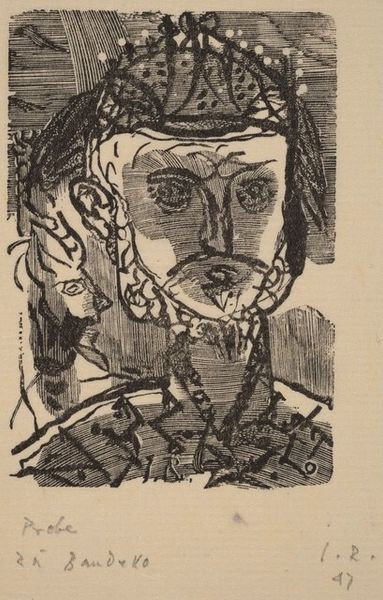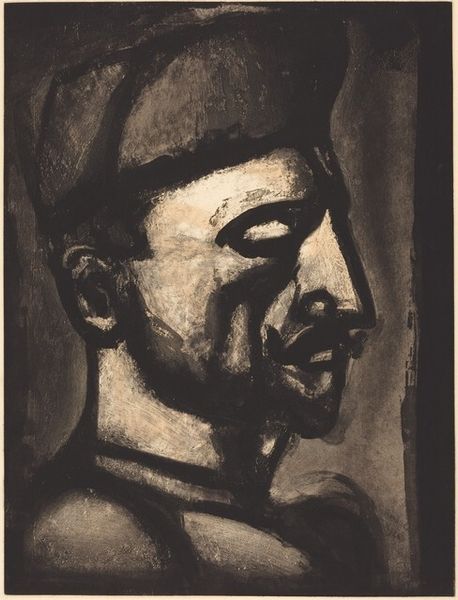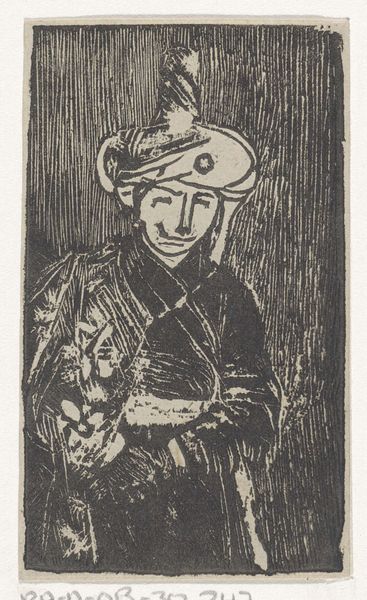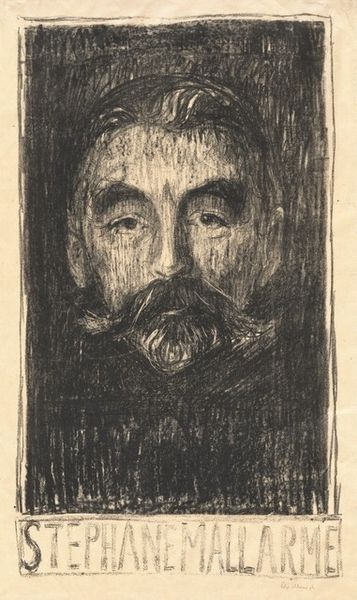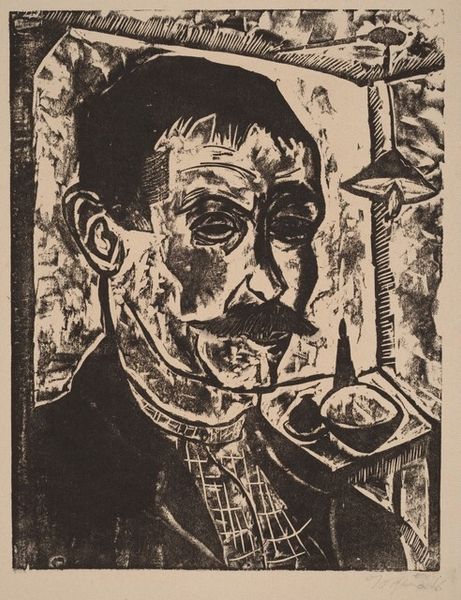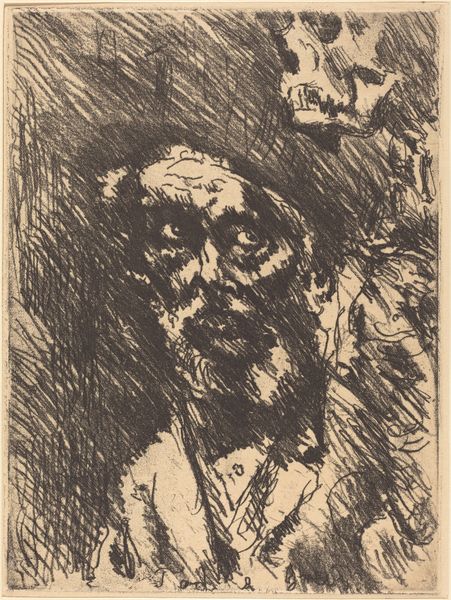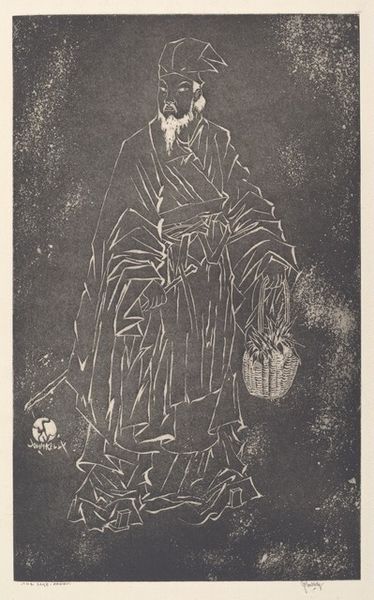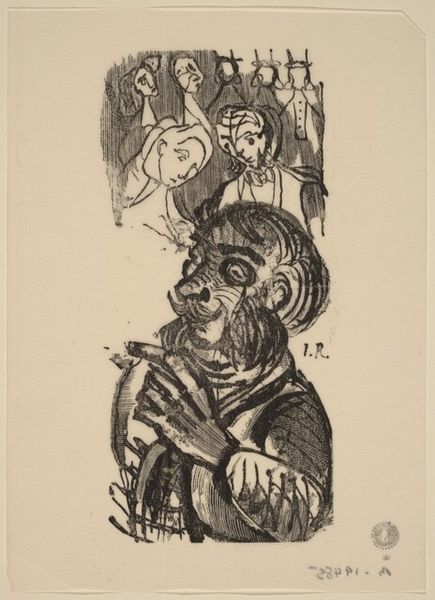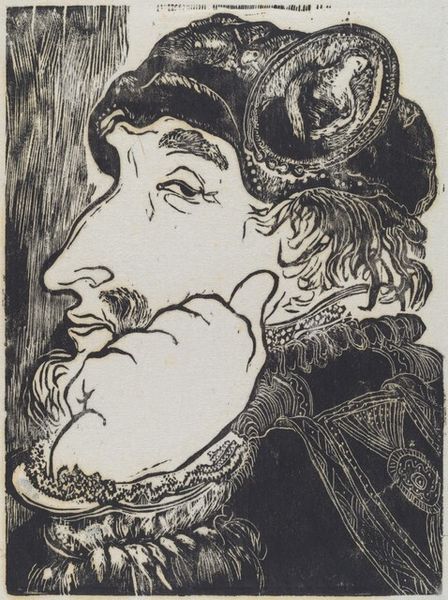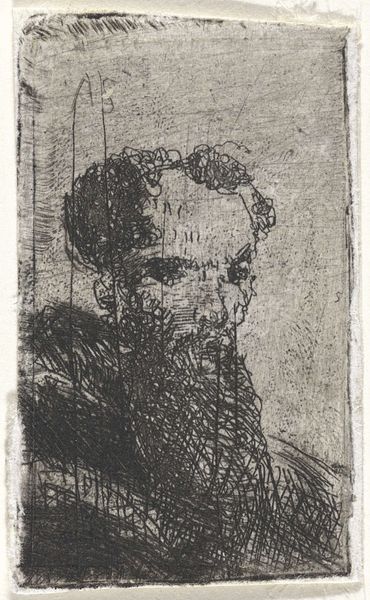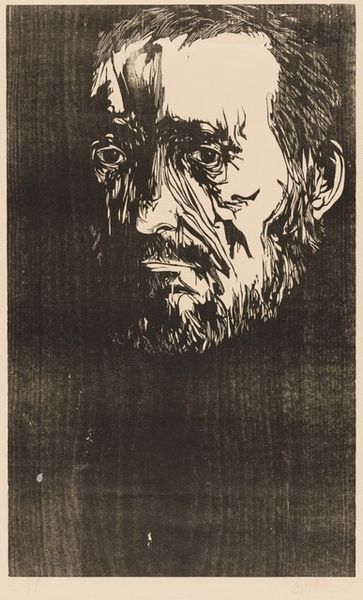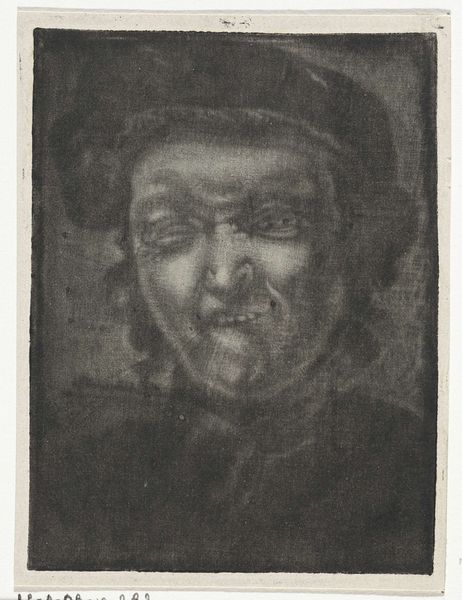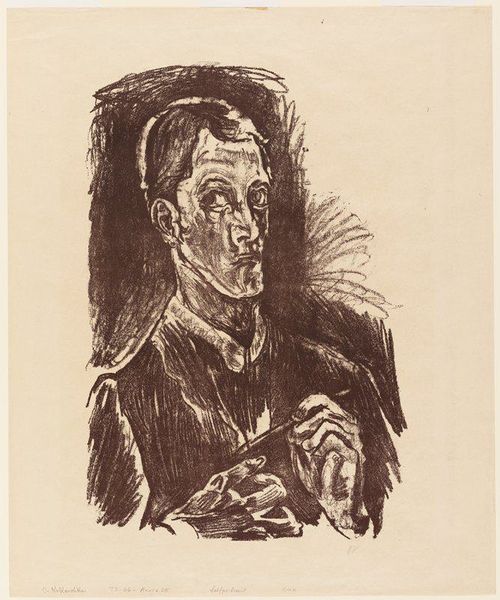
lithograph, print, etching
#
portrait
#
lithograph
# print
#
etching
#
caricature
#
pencil drawing
#
expressionism
#
modernism
Dimensions: image: 41.2 x 26.6 cm (16 1/4 x 10 1/2 in.) sheet: 52.9 x 40.2 cm (20 13/16 x 15 13/16 in.)
Copyright: National Gallery of Art: CC0 1.0
Editor: Here we have Marc Chagall's "Man with a Samovar," a lithograph from the early 1920s. It's a striking image, and the sitter's face is somewhat unsettling, but captivating at the same time. I'm curious, how do you interpret this work within the context of Chagall's life and the artistic landscape of that era? Curator: This print exists in a crucial historical moment: the interwar period in Europe. Chagall, having experienced the Russian Revolution firsthand, eventually settled in Paris. "Man with a Samovar" can be seen as a commentary on identity and displacement. The samovar, a symbol of Russian domesticity and tradition, is held by a figure who seems caught between worlds. What do you make of his attire? Does it seem specifically "Russian" to you? Editor: Not really. He's wearing some sort of hat, a generic jacket, but there is nothing very specific. Is this a depiction of a specific person? Curator: Possibly. But more importantly, it reflects a broader sentiment within the émigré community. Chagall and other artists, writers, and intellectuals, forced to leave their homes, carried their cultural heritage with them, even as they assimilated (or failed to assimilate) into Western societies. The print highlights the psychological tensions inherent in that experience. It also raises important questions about artistic patronage. Editor: Patronage? Curator: Yes. Chagall's movement to Paris allowed him to enter into commercial arrangements to survive. Editor: That’s a different way of considering the image, I never thought about that. Thanks for the insight into the historical circumstances surrounding its creation! Curator: Indeed. By examining the conditions of the production, reception, and movement of art, we reveal how social and cultural institutions and trends play a fundamental role in creating meaning.
Comments
No comments
Be the first to comment and join the conversation on the ultimate creative platform.
